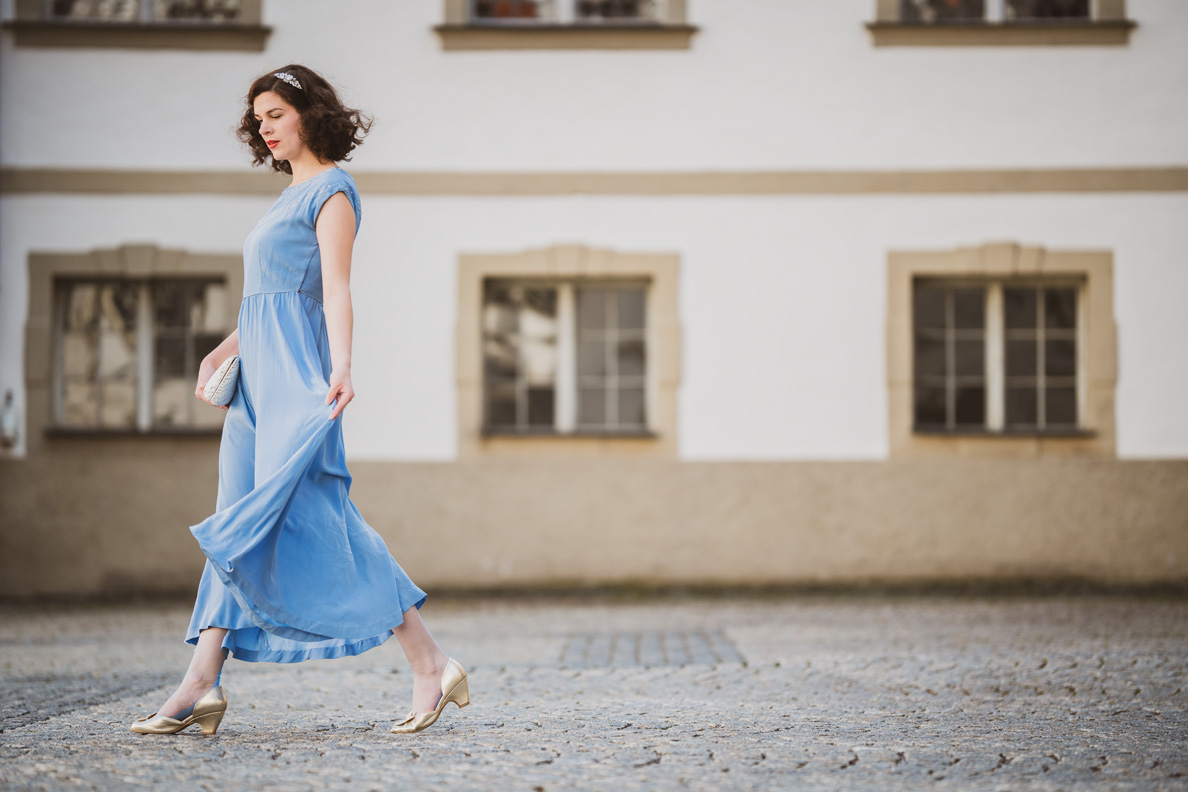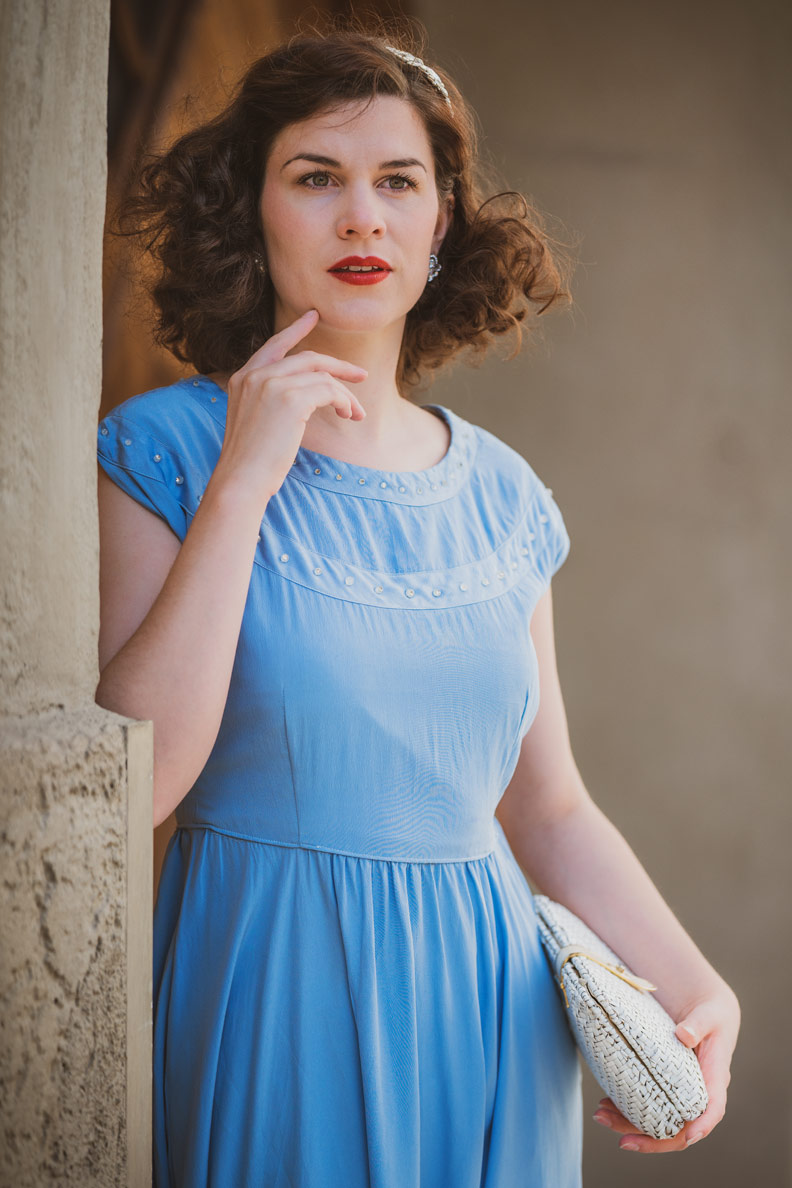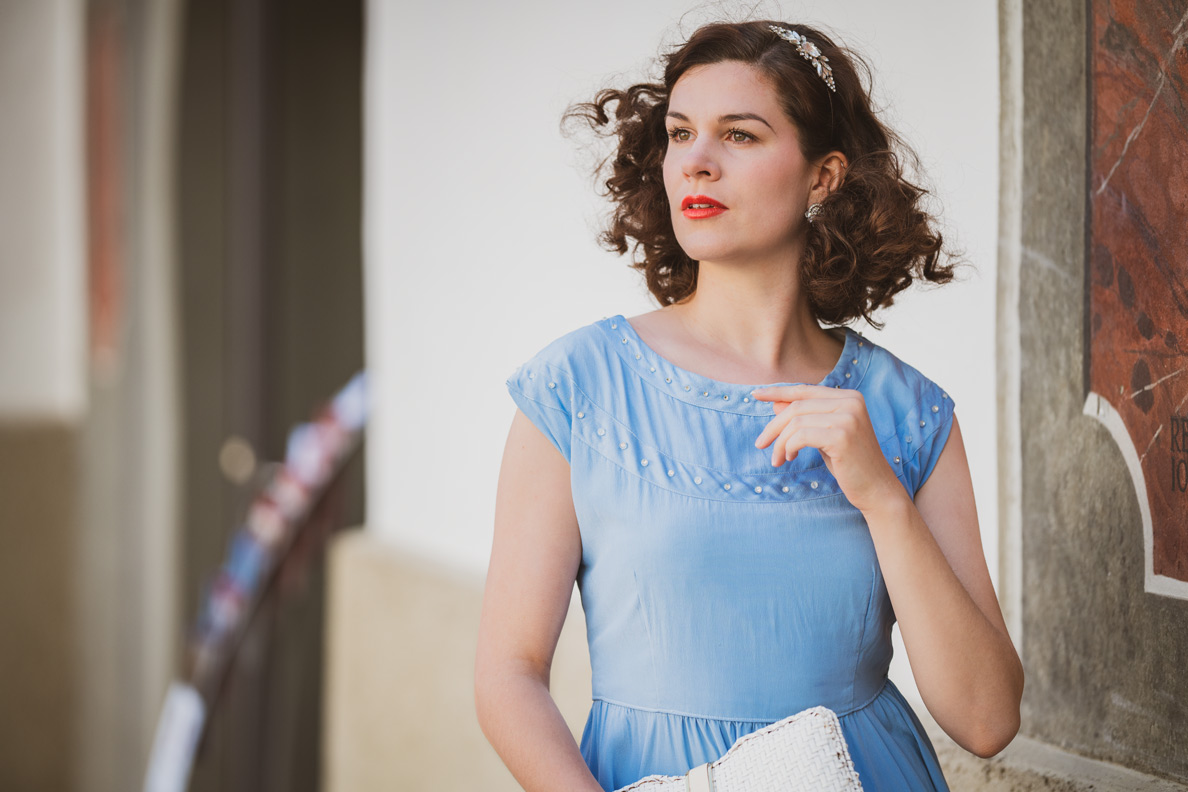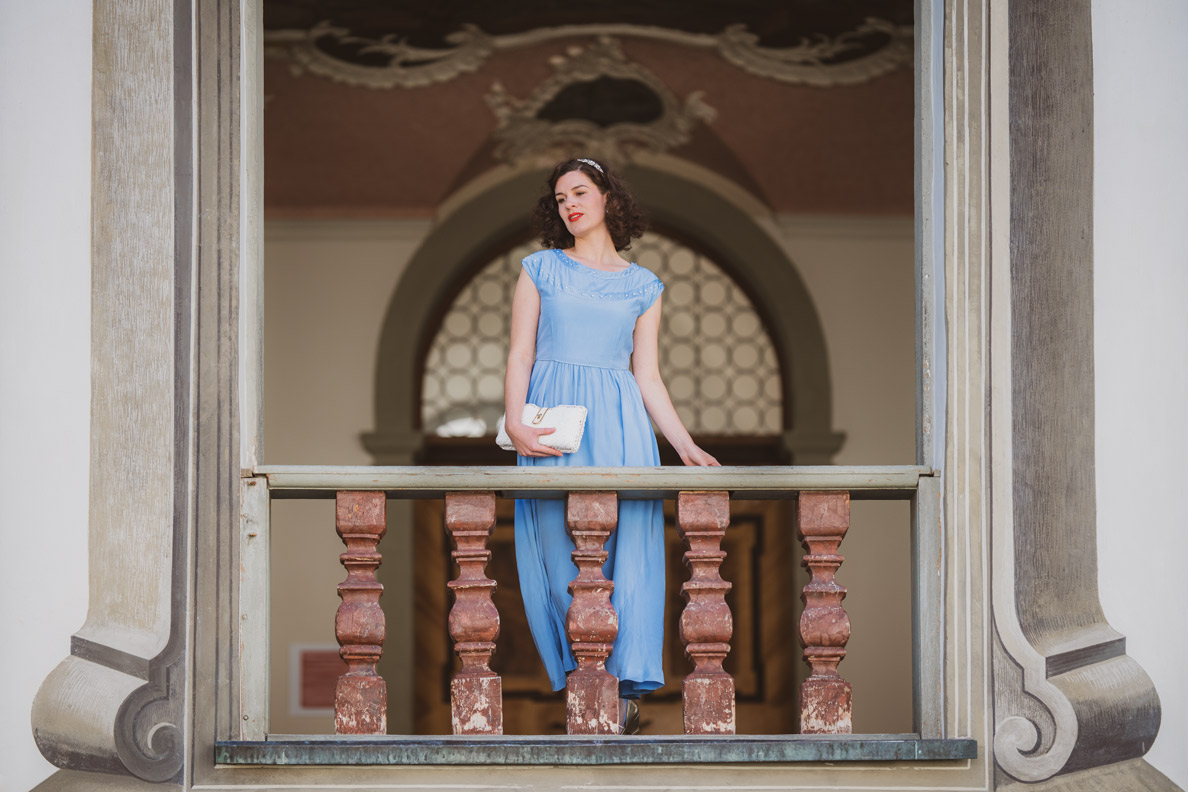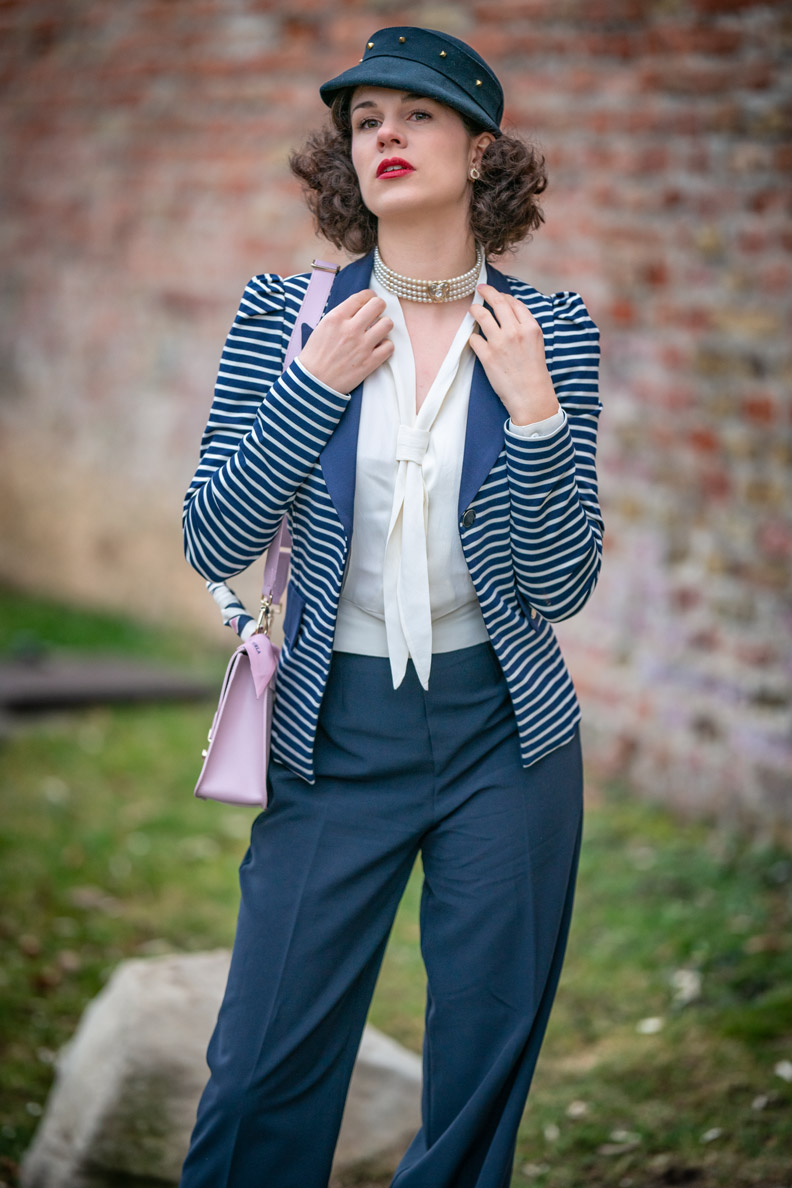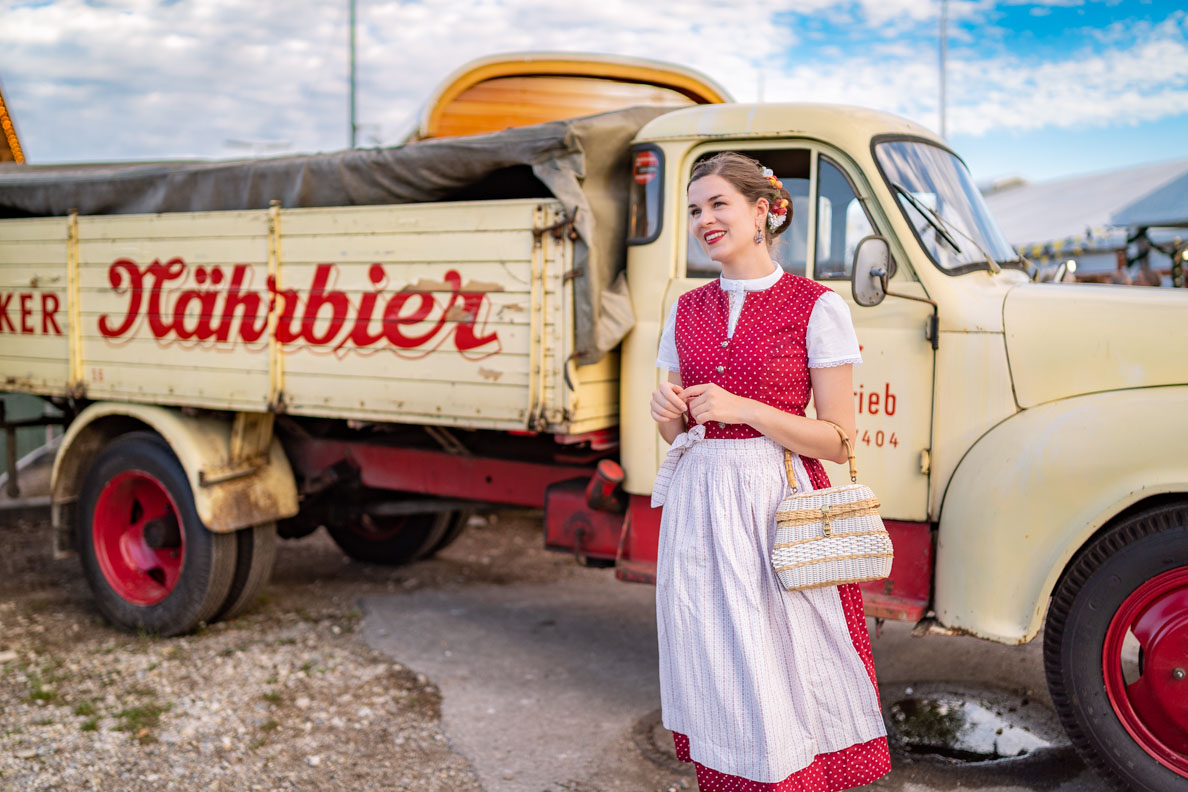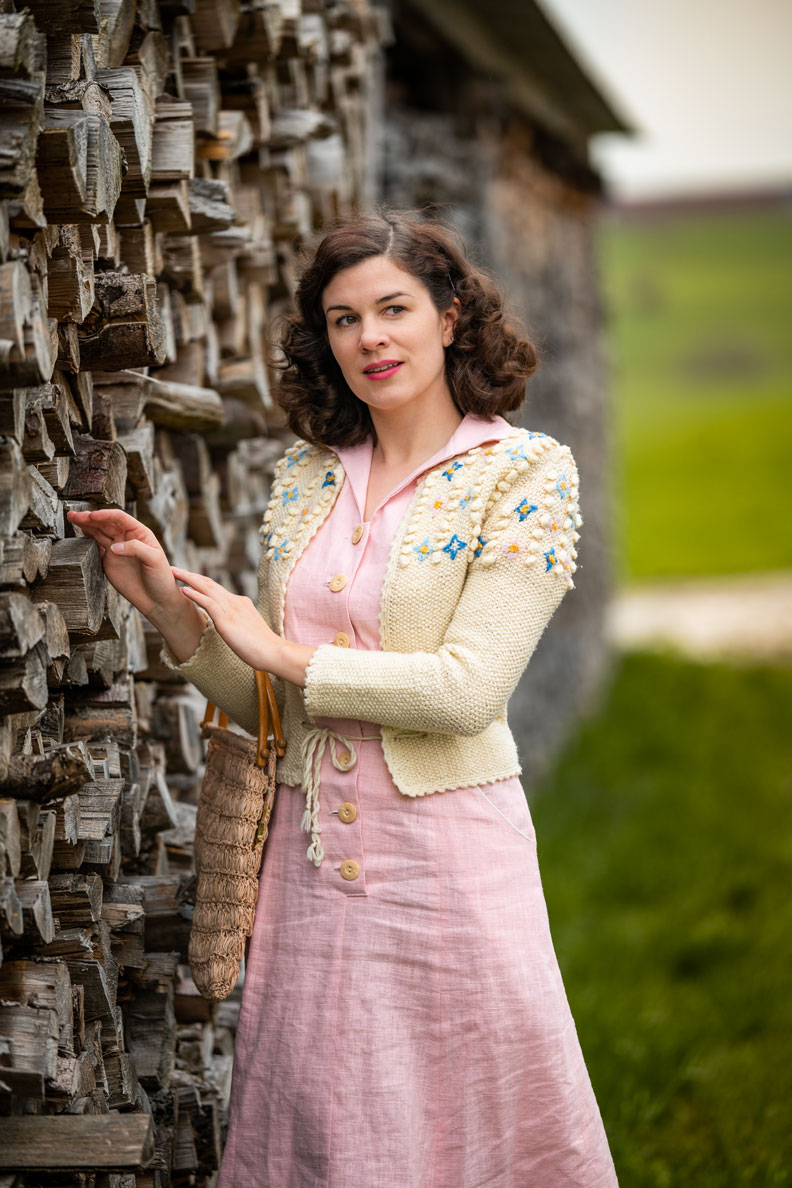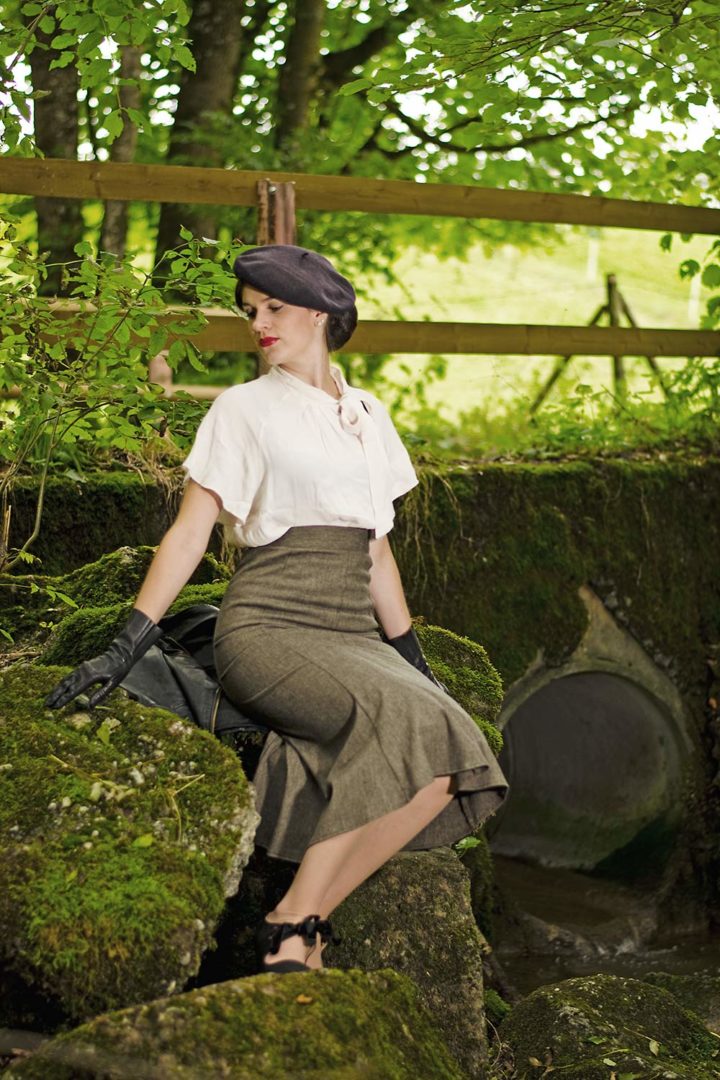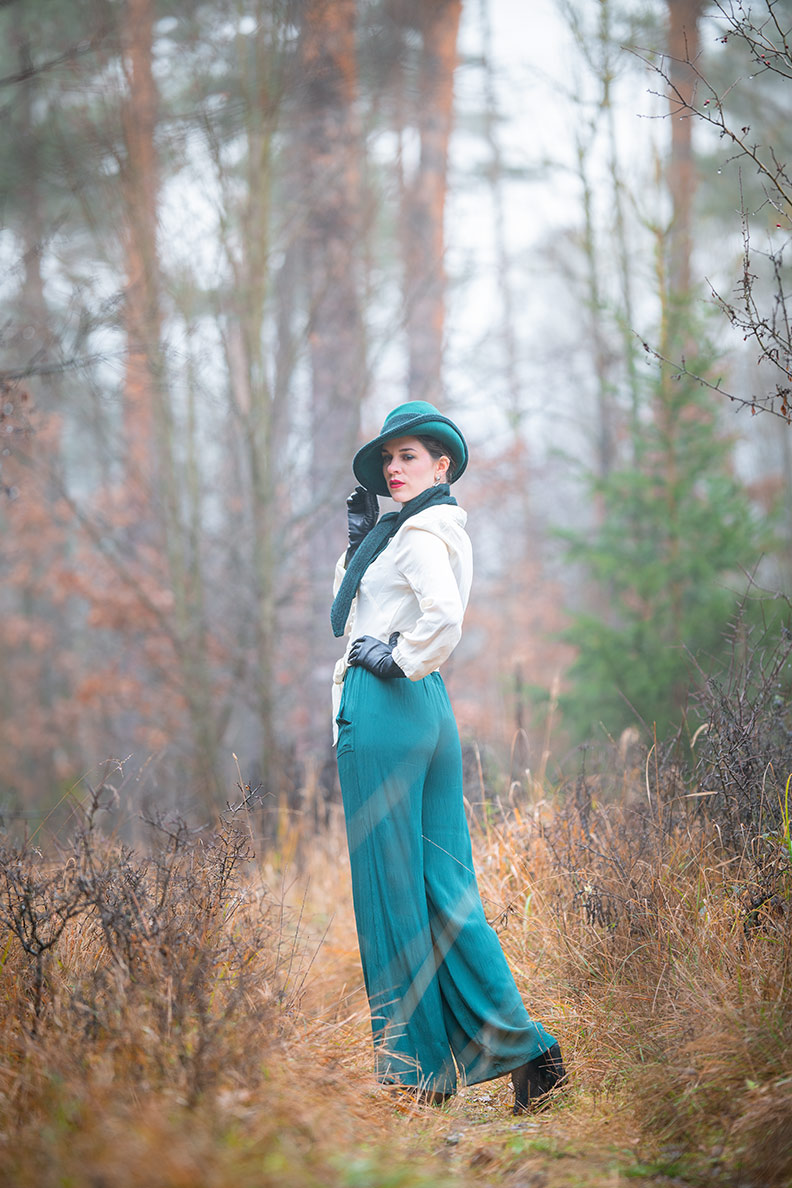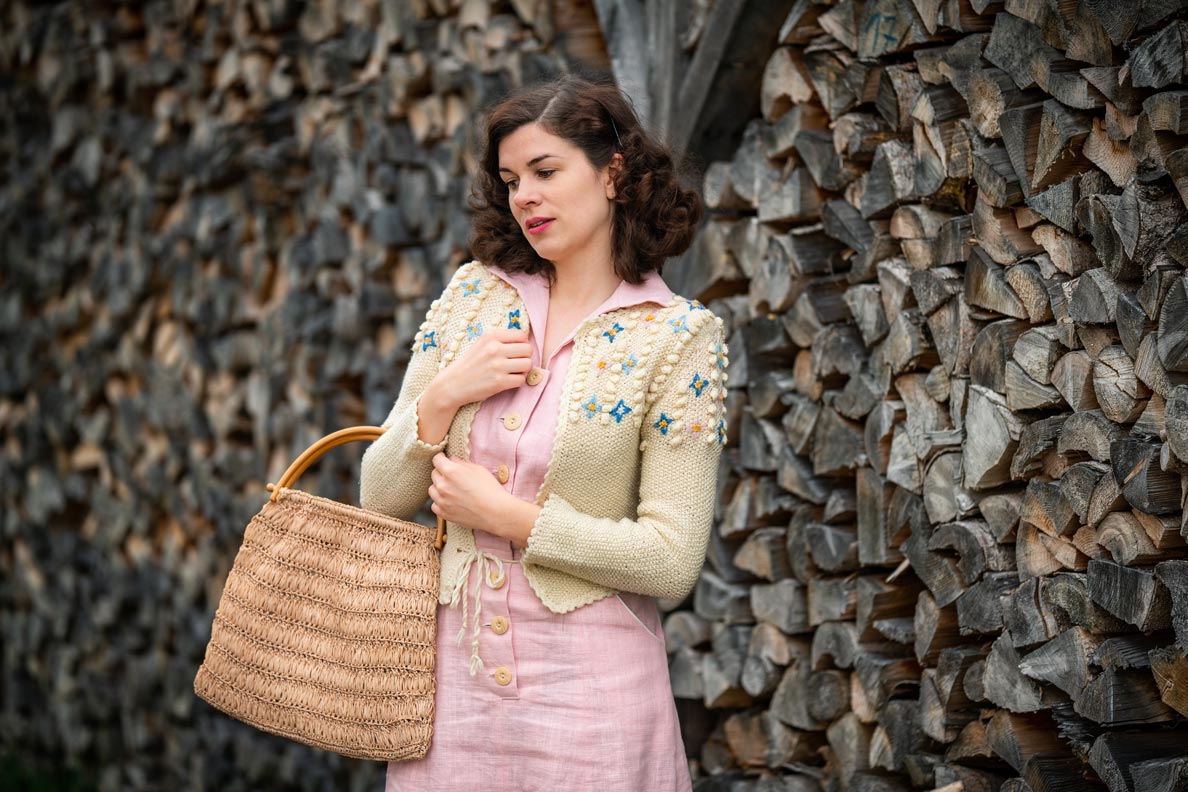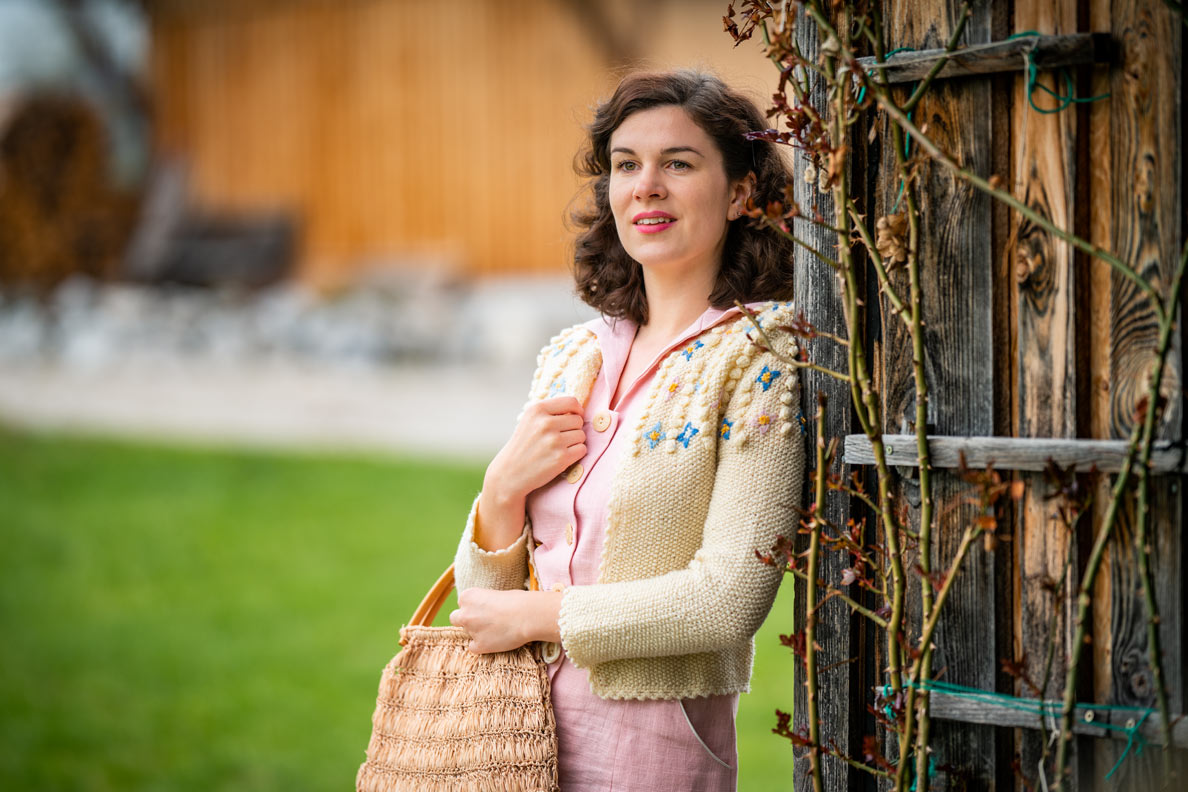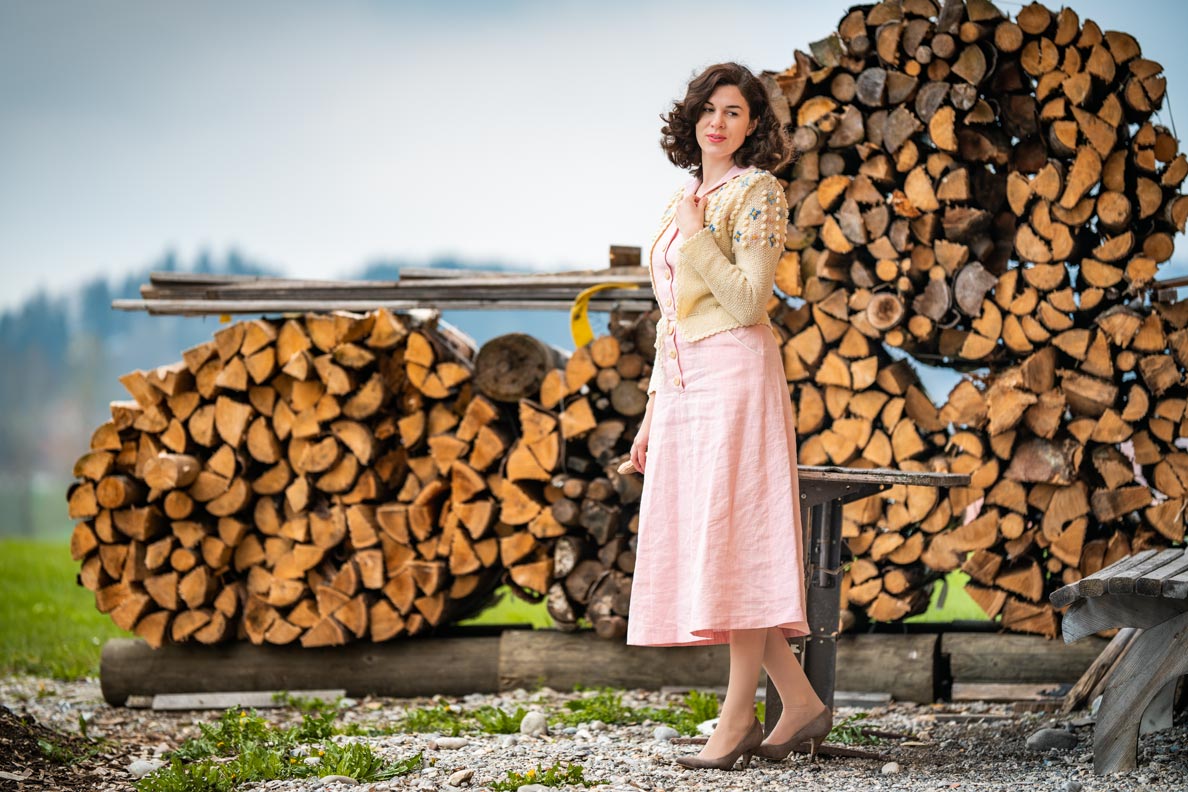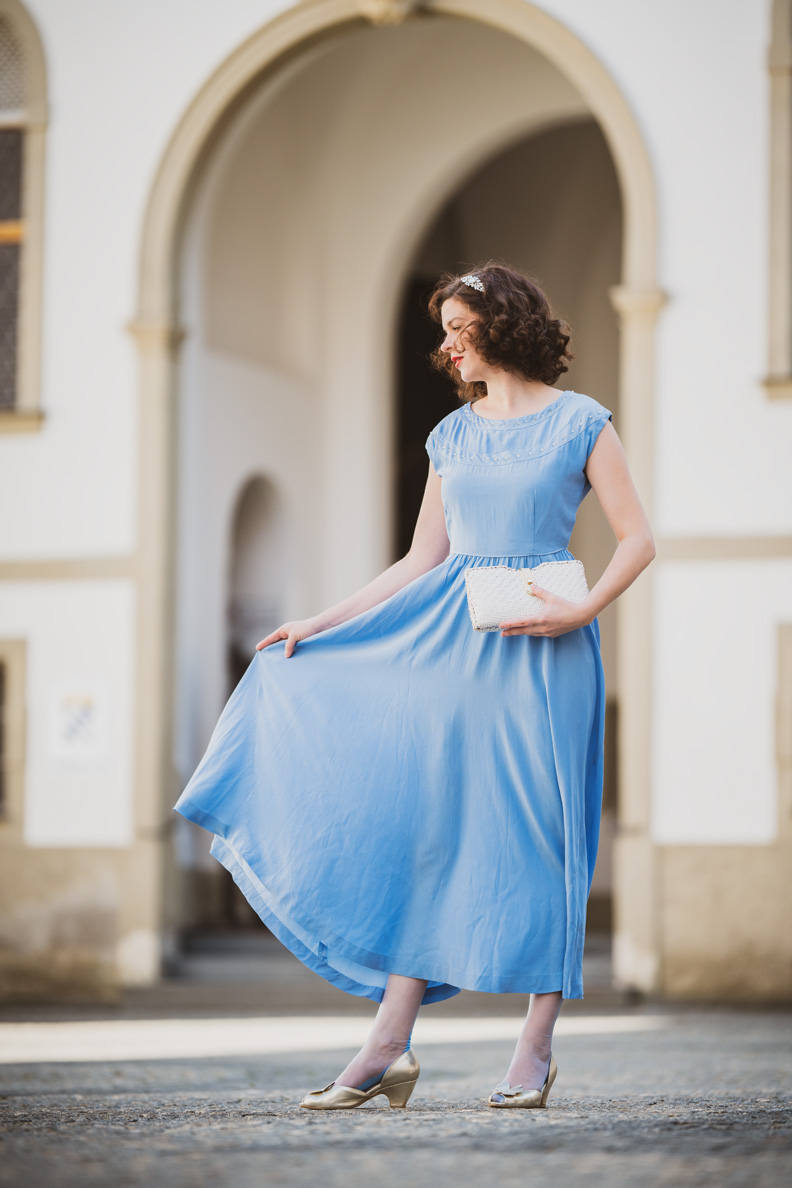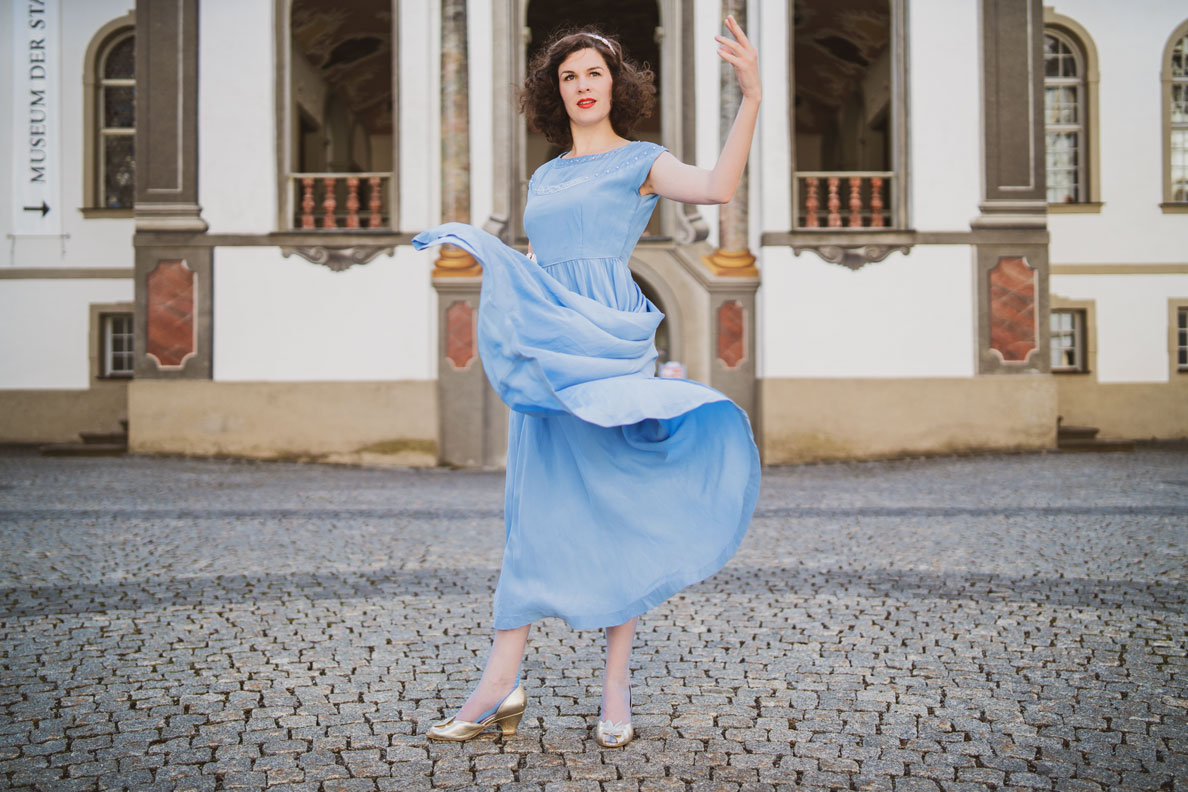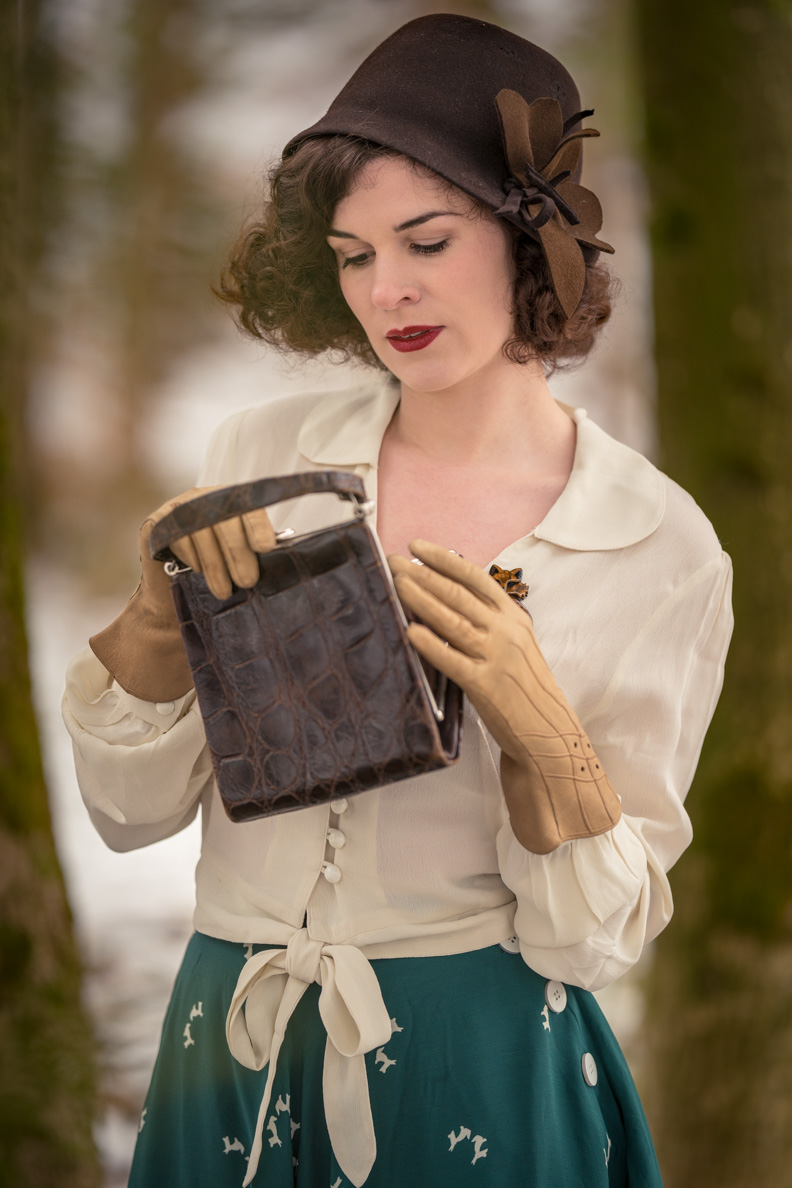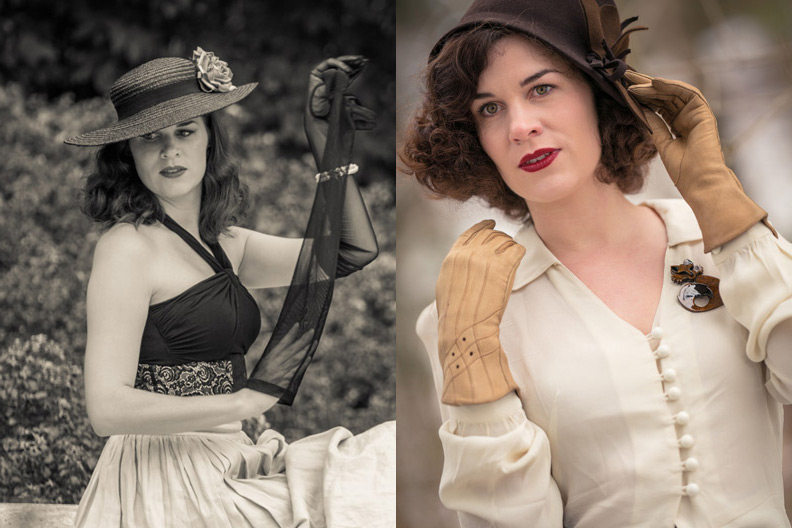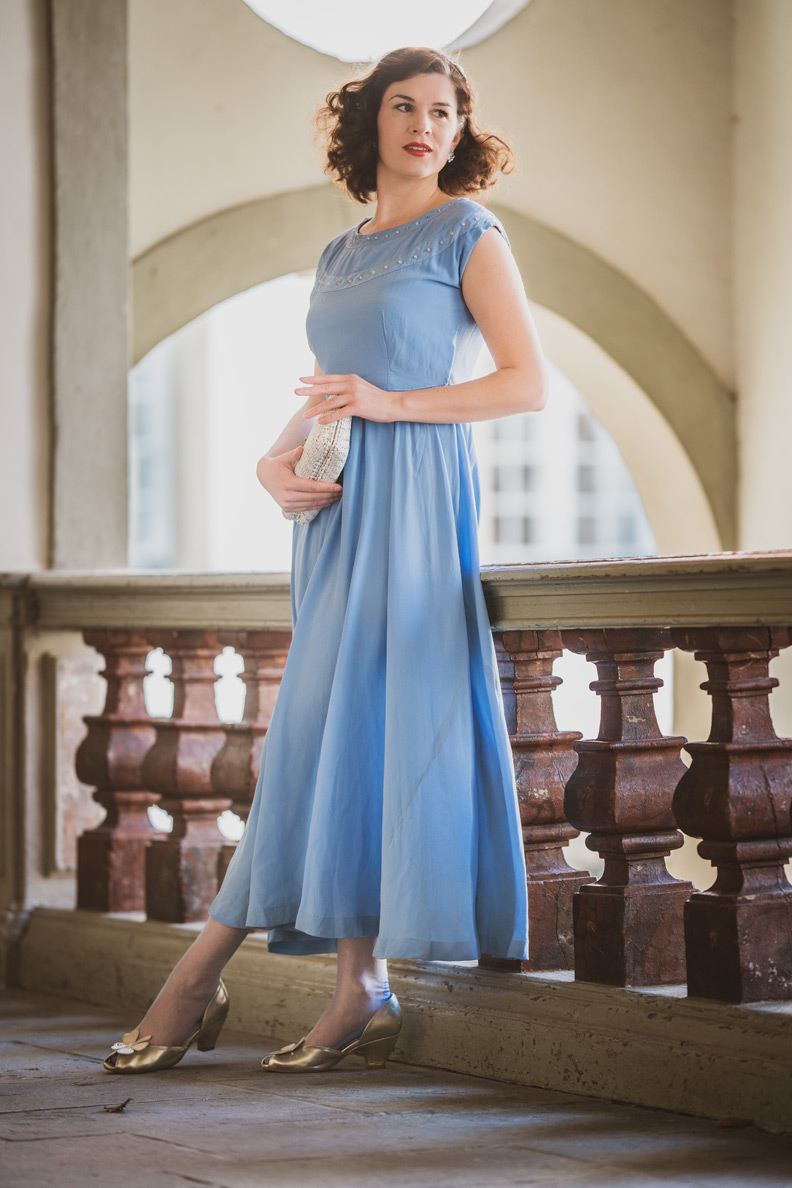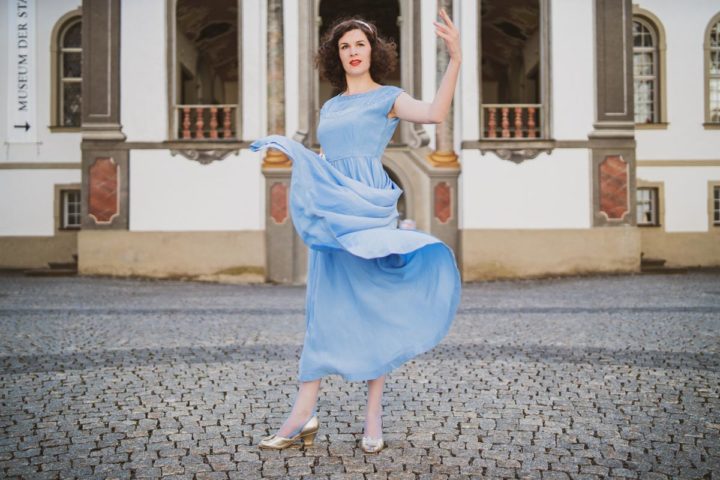
30s Fashion: The impacts, styles & icons
This blogpost contains affiliate links
The Great Depression, poverty, unemployment, and political tensions on the one side, technological progress, and innovations on the other side: The 1930s were a quite turbulant decade. All these political and socio-economical incidents, of course, also had an inpact on fashion. In this blogpost, I’m going to tell you what women wore on days and nights out, which accessories they liked, and even what they wore underneath, as well as a little bit about the men’s fashion of this time. But to better understand the trends of the 1930s, we are going to have a deeper look at the political and socio-economical incidents of this decade.
The Fashion of the 1930s: The Impacts
In autumn 1929, the stock market crash in the US lead to the Great Depression all over the western world and the roaring 1920s abruptly came to an end. The flappers had to grow up and saving money inevitably came into fashion. High unemployment rates and political changes characterize this decade. Art déco and cubism are important styles of the 1930s.
Hollywood Glamour vs. Poverty
On the other side, Hollywood had an enormous influence on the 1930s fashion. This decade is also known as the “Golden Age of Hollywood”. Going to cinemas became extremly popular during this time and watching the glamorous Hollywood actresses could be seen as great way to escape from the hard reality for at least a short time. And therefore, it’s no wonder that costume designers got more influence on fashion.
Despide the Hollywood glamour, a huge part of the society was forced to live frugal. But although many people were faced with poverty, a large part of them still wanted to dress themselves the best way possible.
Unemployment & a growing Middle Class
Department stores and the film industry entered into collaborations to benefit mutually: The focused on the growing middle class and stores sold affordable dresses according to the original patterns of the dresses worn in movies. Women with less budget could make their own dresses according to the original patterns.
Although high unemployment rates were a huge problem of the 1930s, a middle class with a certain level of prosperity still existed. Especially white collar workers weren’t as affected of redundancies as blue collar workers.
Nevertheless, jobs got shortened in many different sectors and therefore many women stopped working in jobs. Emancipation even almost grind to a halt.
Mass production and technological progress, on the other side, made sure many people had access to pretty and affordable clothes.
Towards the end of the 1930s, welfare reforms in some western countries like Great Britain came to fruition and live got a bit easier for the people of the 1930s, at least for a short time.
Political Incidents
Political changes mark the 1930s. Fascism aroused in different European coutries, especially in Germany. Spain is in civil war between 1936 and 1939.
In a fashion perspective, Germany was still up to date in the 1930s, but politically, the National Socialism gained the upper hand. The Allies had to accept that they couldn’t trust Hitler’s piece promises. In 1939, Hitler and the NS regime provoked World War II.
Fashion industry was profitable, also in Germany, and the German businesses owned by Jews fell victim to Aryanisation by the Nazis. But although they tried, it wasn’t possible for the NS regime to prevent the majority of German women from wearing internationally fashionable clothes. Paradoxically, especially the women of the Nazi leaders rather wore dresses from Paris than conservative German clothes.
Influental (Costume) Designers of the 1930s:
- Madeleine Vionnet
- Elsa Schiaparelli
- Coco Chanel
- Gilbert Adrian
- Marcel Rochas
- Nina Ricci
- Mainbocher (entwarf Wallis Simpsons berühmtes Hochzeitskleid)
Influental female Style Icons & and Actresses of the 1930s:
- Greta Garbo
- Marlene Dietrich
- Jean Harlow
- Joan Crawford
- Mae West
- Wallis Simpson
1930s Fashion
All in all, the fashion of the 1930s became more feminine again. Due to the Great Depression, the motto was “less is more“, even in Haute Couture. Parisian fashion houses had less collections and the focus was more on the silhouette and fabric instead of ornaments and decoration. Nevertheless, it wasn’t unusual that women changed their outfits several times a day. The day began with breakfast, wearing a long dressing gown. Afterwards, women wore sportswear and did a little exercise, if they could have afford it. Then, they usually dressed themselves in a daydress. For cocktail hour in the late afternoon and early evening, they wore cocktaildresses, and for evening occasions, glamorous evening dresses came into fashion.
Fur was a popular companion for many different occasions. Here, the motto was: A fur collar is good, a fur cape is better. The ones who couldn’t afford fur, but still wanted to look glamorous tried to imitate the elegant look by wearing velvet capes, for example. (Nowadays, there a great cruelty free alternatives available, like this fake-fur stole by Vecona Vintage, for example.)
Let’s have a deeper look on the different kind of women’s clothes in the 1930s. For the sake of clarity, I decided to divide the following paragraphs into different categories. Let’s start in the morning and therefore with dressing gowns and lingerie.
1930s Fashion: Lingerie & Morning Gowns
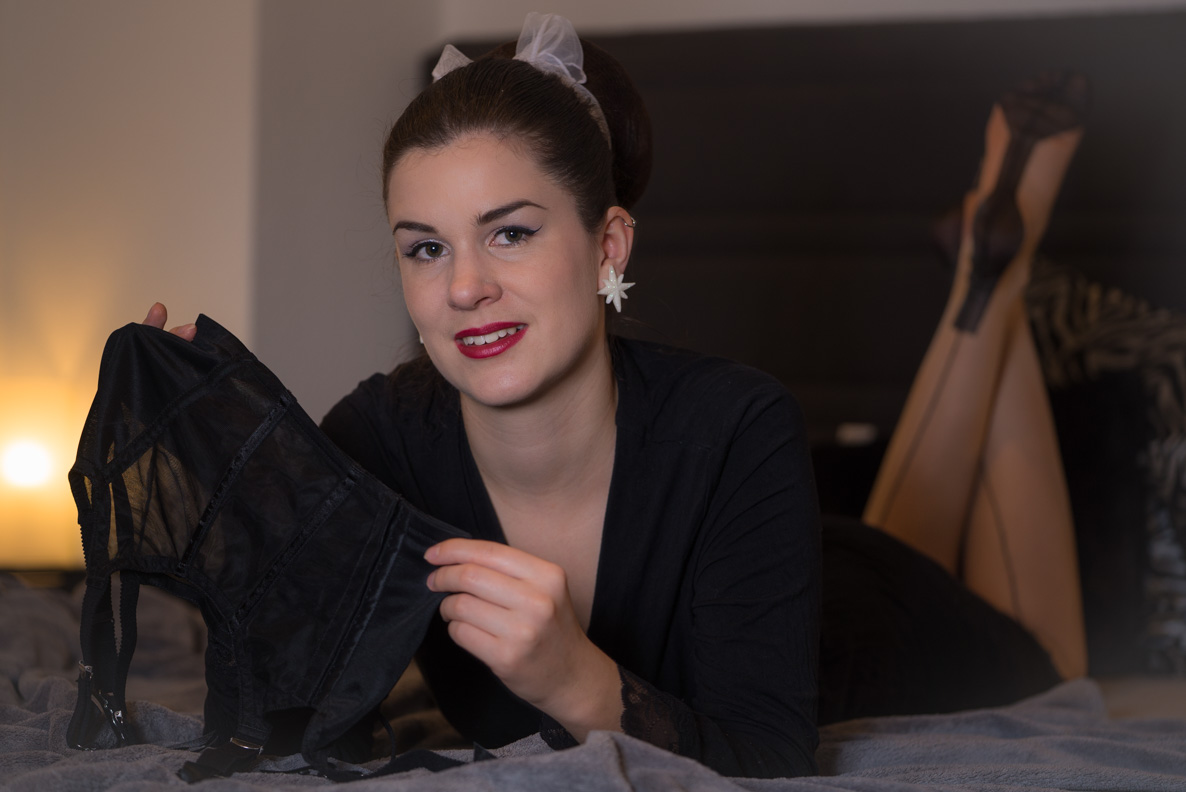
Due to the fashionable slim silhouette, bodice and lingerie industry boomed. The classy corset couldn’t find its way back into fashion, but new materials like lastex got invented. They smoothed the body and often didn’t had any seams that could be seen under the slim dresses.
Another innovation of the 1930s was the introduction of the first standard bra sizes A, B, C, and D by the Warner Brothers Corset Co.
Lingerie was available in many different shapes during this time, as it had to go with all the different kind of dresses, no matter if they had a deep back neckline or were, later on, strapless.
Furthermore, house robes, negligés, nightgowns, and dressing gowns were very popular in the 30s. The dressing gown, in which elegant women started their day, were mostly long and often made of silk – the perfect outfit for breakfast. (Pretty dressing gowns and robes inspired by the 1930s are avialble here, for example.)
Until 1939, stockings were still made of silk or cotton. In the 1940s, nylons were sold in large amounts, at first. Stockings were attached to garter belts or corselets.
1930s Fashion: Leisure and Sportswear
At about the end of the 1910s, women started to wear long knitted cardigans or sweaters to sportive activities. A popular fabric for these kind of clothes was jersey, by the way. Knitwear also has the advantage that it doesn’t really wrinkle, which is pracitcal, especially for travelling. In the 1930s, sportswear for women didn’t really change.
However, designers like Jane Regny from Paris, introduced some lovely new nautical designs like a sailor suit inspired outfit for women, which was perfect for arising yachting. Leisure and sportswear was the only area were trousers for women were socially accepted, by the way. If you want to know more about the 1930s sportswear, make sure to check out this blogpost.
Tracht in the 1930s
Wearing a Dirndl or Tracht for a trip to the mountains or coutryside became especially popular in Germany during the 1920s. Colourful patterns made the Dirndl a neat companion for different leisure activities like hiking, biking or going out for a walk in nature.
It became also popular for feminine city dwellers to wear a fashionable Dirndl in combination with a matching hat to Salzburg Festival, for example, or a trip to the Salzkammergut.
Even the Haute Couture got inspired by the alpine dress and used some details for their creations which popularized the Dirndl internationally.
This, however, was a development that wasn’t really in line with what the Nazis thought a Dirndl should be associated with. They tried to use the native cliché of the Dirndl and Tracht to enhance a kind of German sense of identity. However, as mentioned before, it wasn’t possible for them to prevent German women from following international fashion trends.
1930s Fashion: Daytime, Afternoon & Cocktail Looks
Daytime wear became more practical in the 1930s. Nevertheless, the hemline got longer, and the silhouette remained slim.
In the house, women mostly wore basic house dresses, made of practical durable cotton. When leaving the house, though, they usually prefered something more elegant. So called day or afternoon dresses stuck with the standard silhouette and classic 1930s features, which means they usually had puff sleeves, belted waists and large yokes and collars. Those dresses, though, had more embellishment and detail like embroidery, decorative buttons, bows, and so on than the basic house dress.
Beside afternoon dresses, a combination of a skirt and blouse was popular. Skirts and dresses usually were slim and calf-length. Due to a slightly flared hemline, women were still able to move around. Blouses often had puff or flounced sleeves.
In the 30s, some women were also following the style of Marlene Dietrich and started to wear trousers. Although they still weren’t really socially accepted, it was also no longer possbile to completely prevent women from wearing trousers.
Shop 30s inspired Trousers for Women:
For cocktail hour in the late afternoon and early evening, women usually replaced their afternoon dress by a cocktail dress. This kind of garment usually had floor-length, but still daylike patterns like flowers, for example. So it can be said this dress combined the afternoon dress with the evening gown and was perfect for elegant garden parties or horse races. A wonderful example for such a dress is this one here.
1930s Daytime Fashion: Cuts & Style
In the 1930s, puff sleeves were very fashionable and with time going on, sleeves had all different kind of shapes and lengths. At around 1934, the style of daytime fashion appeared more strict with an enhanced upper body and shoulder pads. Reaching the end of the decade, it seems like fashion already knew that another war is coming: Shoulders got extremly enhanced and almost looked masculine, skirts got shorter, flat hiking shoes became fashionable, and all in all the look of the women got a bit of a uniform character.
1930s Daytime Fashion: Patterns, Colours & Fabrics
Especially during summer time, all kinds of floral print were popular. Blouses usually were plain or had lovely patterns, sometimes even Art déco inspired. Furthermore, polka dots, all kinds of stripes, and even animal prints got fashionable. At the end of the 1930s, checks were very popular as well.
In the daytime fashion of the 1930s, colours like green, brown, yellow, grey, red, and blue were dominant. Furthermore, women had a weakness for black and white contrasts. The prefered fabrics for daytime were definitely jersey and crepe fabrics. But also wool, velvelt, tulle, silk, and taffeta were used.
1930s Fashion: Knitwear
Knitwear was very popular during the 1930s. As most women knew how to knit back then, and patterns were often supplements in magazines, selfmade knitwear was a cheap way to look pretty and fashionable, while being able to transform summer dresses into autumn appropriate outfits. Light and pretty knits could even be worn in the evening, if the occasion wasn’t formal.
During wartime, women often made new clothes out of old ones, and used yarn residues for their knits.
1930s Fashion: Evening Gowns
While in the 1920s a slightly “boyish” look and shorter hemlines were in fashion, the evening gowns of the 1930s were much more feminine: Dresses had hems that nearly touched the floor, a fitted style with an accentuated natural “high waist”, and often very deep back necklines. On top of the dresses, small and elegant capes were popular. The very brave fashionistas sometimes even wore trousers in the evening, the so called evening pyjamas.
Interesting to know: As it was not allowed in the US during the 1930s to show only the top of the breast in films, Hollywood dressed their acctresses in gowns with very deep back necklines. This style then got imitated all over the rest of the western world.
1930s Evening Fashion: The Silhouette & Cuts
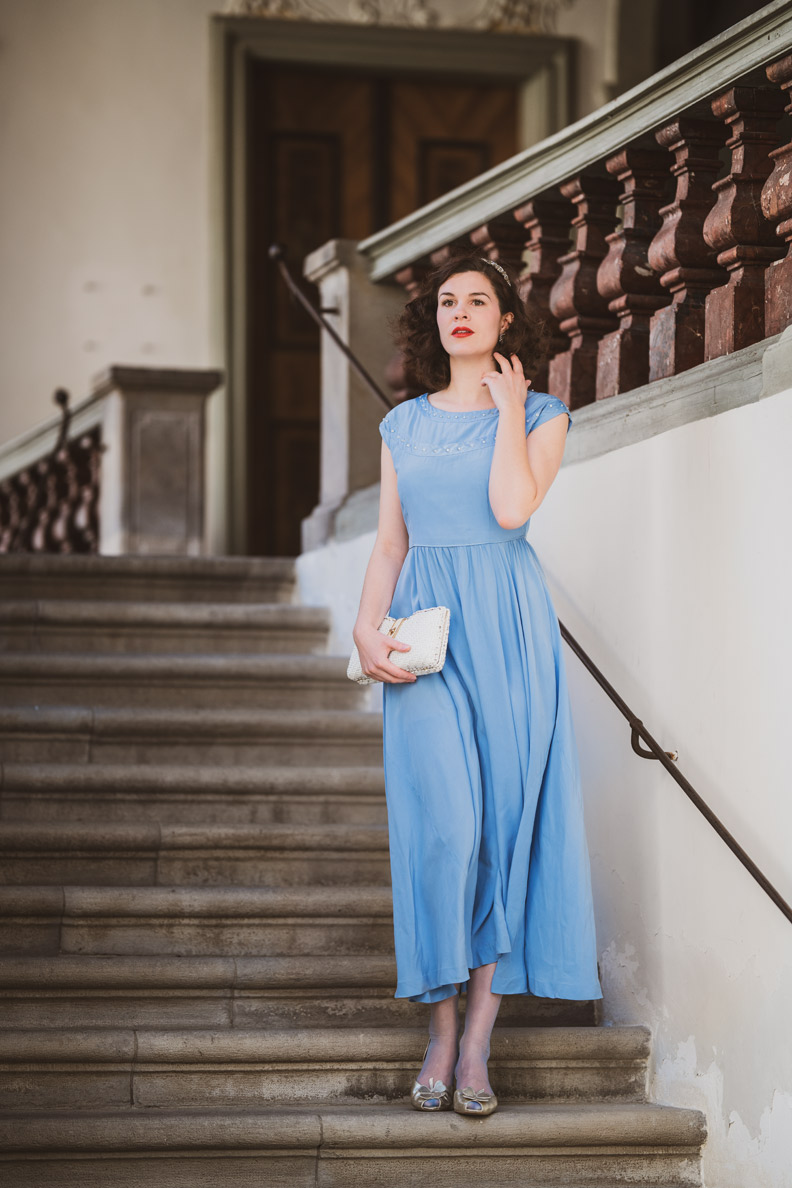
Beside longer hemlines, which sometimes even had short trains, there were some other changes in fashion: The waist got enhanced again, often with the help of a thin belt. Furthermore, the bias-cut introduced by Madeleine Vionnet got extremely popular. This way of cutting gives the fabric a natural amount of elasticity, which makes sure the dress is very figure-hugging.
All in all, the silhouette of the 1930s can be described as elegant, clingy, and slender with flowing lines. The hips should be narrow, the breast, however got enhanced.
With time going on, the focus more and more was on the sleeves. Puffs and ruffle sleeves, were very fashionable and later in the decade high necks and halter styles with plunging backs became popular.
Some designs of the 1930s made the wearer look like a Greek goddess, while Elsa Schiaparelli introduced a quite surrealistic appearing style.
Besides all the simple but elegant designs, there were also very girly dresses with lots of ruffles and ornaments available. A trigger for this trend might be the movie “Letty Lynton” with Joan Crawford from 1932. By 1939, the movie “Gone with the Wind” and the romantic dresses shown in it, made the romantic look even more popular.
1930s Evening Fashion: The Colours
- White
- Cream
- Silver
- Gold
- All shades of apricot, peach and salmon pink
- Light Blue
- Black and sometimes also bright colours
1930s Fashion: The Accessories
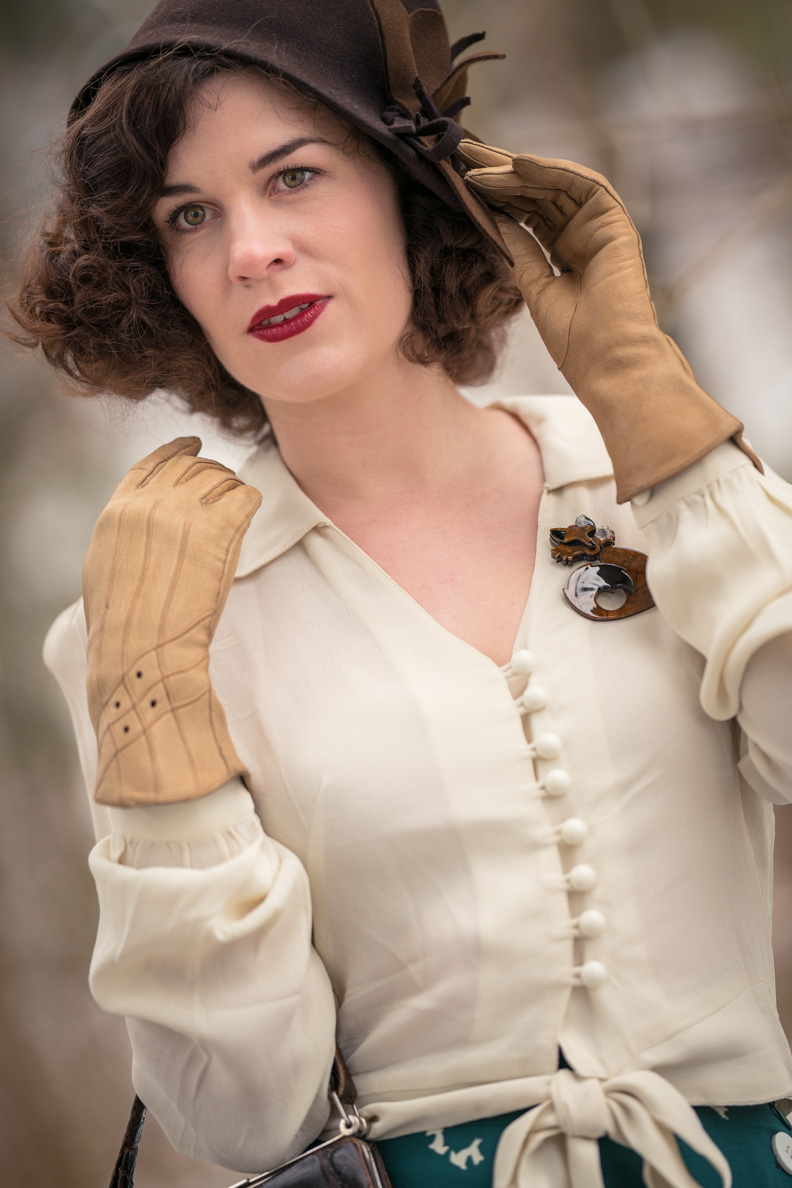
Accessories played a big role in 1930s fashion. A ladylike outfit wasn’t complete without gloves, a handbag, and a hat, of course. And no matter how elegant and kind of simple the clothes of the 1930s were, hat and accessories sometimes had the craziest shapes.
1930s Hats
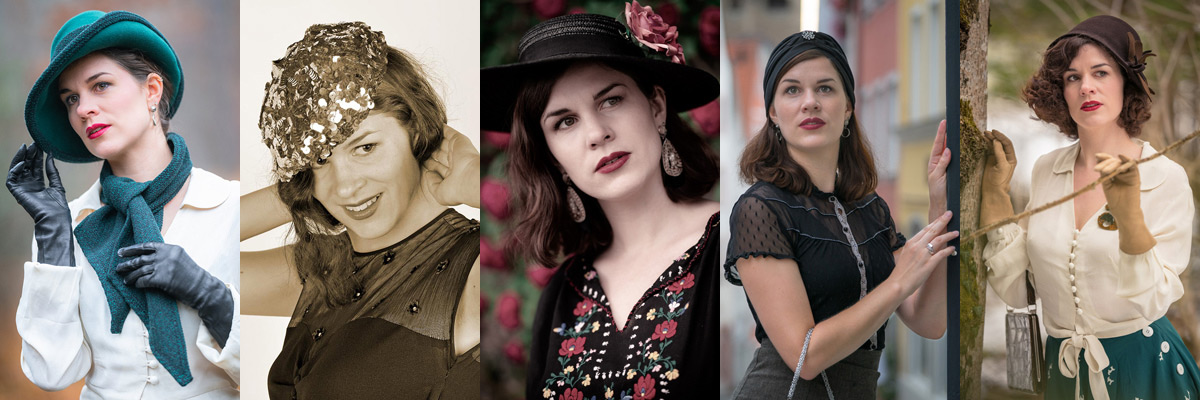
In the 1930s, a huge variety of hats was worn. While in the ’20s the so called cloche was THE trend, hats in the 1930s became more feminie as well. The cloche got transformed into the “slouche” with a brim, and smaller hats were worn at a tilt low on the face. Furthermore, fedoras, different kinds of turbans and berets as well as fancy hats with veils and/or feathers were fashionable. In summer, women wore small straw hats as well as wide-brimmed cartwheel hats. And starting with Elsa Schiaparellis popular shoe hat, which can be seen as an precursor for the modern fascinator, hats became even more crazy.
Handbags in the 1930s
Due to technological progress, new affordable handbag designs were available. Handbags were made of many different kind of leathers, with crocodile leather being especially desirable. Bags used to be small and flat pochettes, resembling the modern clutches. New and modern pouch bags offered more space for things like lipstick, powder, and a mirror. The 1930s were also the time when bakelite bags became fashionable.
Glamorous evening bags often had jeweled clasps and were, beside of leather, also made of satin, silk, or velvet. Over the years and during the end of the 1930s, a little larger handbags with handles and even shoulderbags became popular.
Gloves of the 1930s
Gloves were another very important fashion accessory in the 1930s. They were worn with both, day dresses and evening gowns. Gloves were available in many different designs. And while daytime gloves mainly were made of leather or crochet lace, evening gloves could have also been of satin, lace or tulle. But although gloves almost were a necessity for every elegant daytime outfit, for some evening gowns, bare arms were preferred.
1930s Fashion: Shoes

Until the end of the 1930s, women had a huge variety of shoes to choose from. During daytime, women either wore classy pumps or the extremly popular Oxfords. In autumn and winter, lace-up pumps were a good choice, and for evening occasions, women liked to wear golden or silver heels. Furthermore, the 1930s are the decade of cut outs and at the end of the 30s, wedges as well as platform sandals began to appear.
1930s Fashion for Men:
For men, a very masculine silhouette with broad shoulders and narrow hips became fashionable. Double-breasted suits were popular, some with wide-peaked or pointed lapels.
Edward, the Duke of Windsor provoked a romantic scandal when he abdicated his throne to marry Wallis Simpson. However, his aristocratic style, namely plaid jackets and shirts, as well as tweed jackets and a belt instead of braces, had a huge influence on men’s fashion during this time.
For warmer days, the summer weight Palm Beach suit made of seersuck, linen or similar light fabrics got introduced.
In the 1930s, there were also more different hat styles for men available, and the cap became the hat of choice of working-class men and a great choice for sporting or other outdoor activities.
Where to buy 1930s (inspired) Fashion
1930s fashion is still wearable, as my baby blue true vintage evening dress proves. But where to buy 1930s (inspired) fashion? Here are some tips:
- My evening dress as well as my vintage cardigan are from Alexa’s in Munich. PS: in this blogpost, I introduce my favourite vintage fashion stores in Munich.
- With a little bit of luck, you can find true vintage pieces from the 30s on platforms like Etsy or Ebay.
- TopVintage offers some 1930s styles as well. The selection isn’t that big, though.
- High quality and authentic reproductions for women and men are available at Vecona Vintage.
- Also Frozen Hibiscus and Julia Seyfarth offer some lovely 1930s style garments.
- At The House of Foxy, you will find a wide range of affordable 30s reproductions.
In the end, it has to be said that this blog post only shows a part of the 1930s fashion. There were a lot of people back then who weren’t able to spend one single penny on clothes. This is why a lot of garments were altered, fixed, and worn out. Furthermore, I tried to give you an overview over what was considered fashionable in the western world with a special focus on Europe and Germany. It is almost impossible, though, to cover all different styles from 10 years, so this article might not be totally complete.
If you want to learn more about fashion and the story of fashion classics, make sure to check out my page Fashion Know-how (click)!
